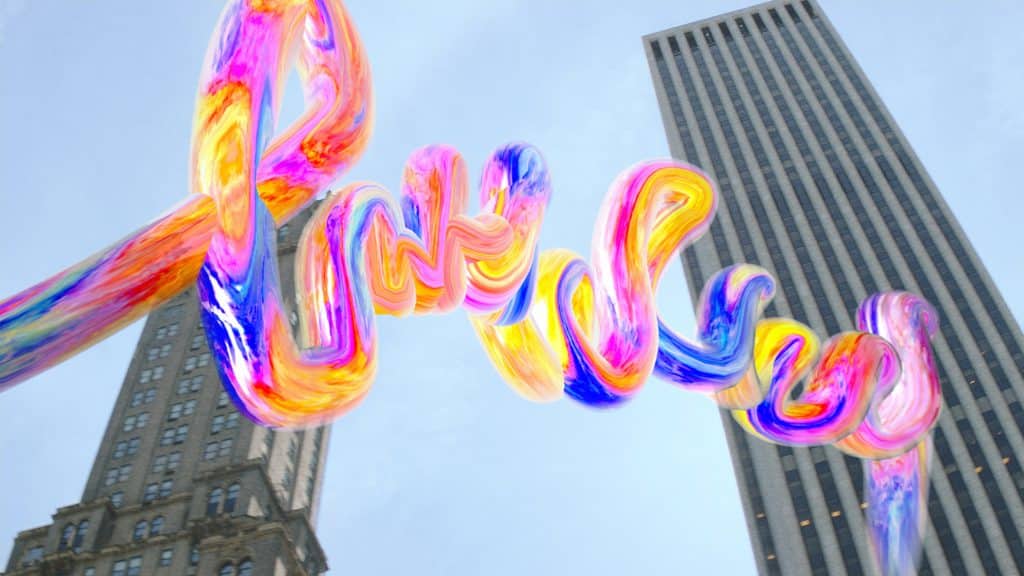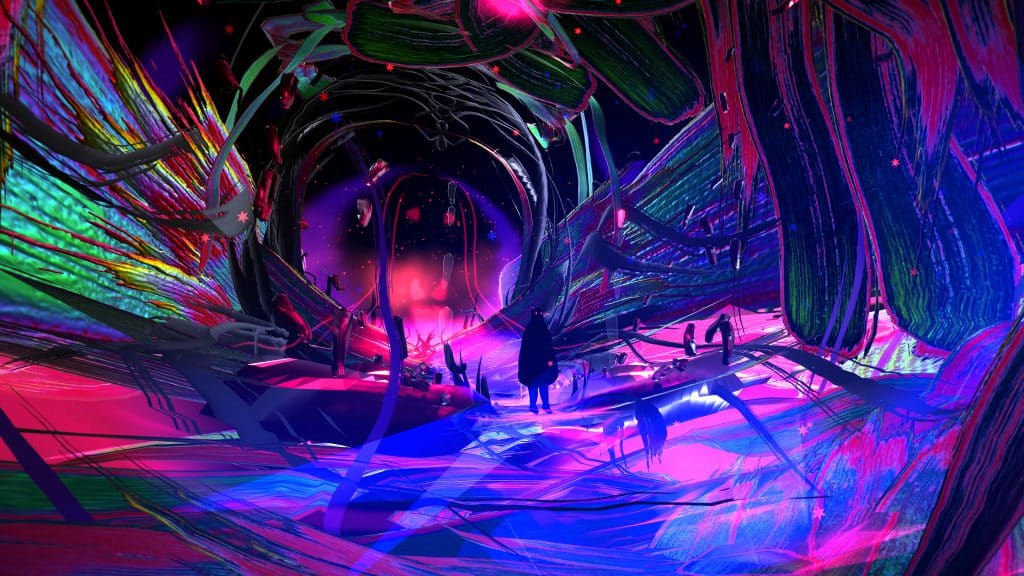Story NAVI NGUYEN
Photos INTERNET
Technology continues to shape new aesthetics in the digital age.
Harmonious convergence
In the 1960s, several contemporary artists began integrating technology into their art, ushering in new visual trends. Visionaries such as Nam June Paik, Shigeko Kubota, John Cage and Wolf Vostell swiftly embraced emerging technologies, infusing their conceptual art with fresh perspectives. This era witnessed the birth of interdisciplinary art forms, including performance art, experimental music and video installations, where artists actively engaged viewers in interactive experiences.

The impact of the internet and digital technology on our physical world was encapsulated in the concept of the “new aesthetic” presented by artist James Bridle in 2012. His installations sparked discussions about the rapid advancement of technology as it alters the way we perceive the material world and blurs the lines between the real and the virtual.
As artists respond to the influence of machines, new concepts emerge. William Betts, for example, designed an automatic painting machine that dots each pixel meticulously. His work also draws images from electronic surveillance, prompting reflections on privacy in our tech-driven society.
Technology’s evolution fuels new materials and creative forms, from 3D printing to immersive VR installations. Notably, projection and lighting art have significantly contributed to spatial installation works, evoking the history of a specific location for audiences to reflect on ancient values. In 2013, the light installation Brighter Later at the Radcliffe Observatory was created by artist Susan Collins. Inspired by the Observatory’s role in astronomy and meteorological recording history, the lighting in the observatory reacted in real time to external weather conditions.
While there are still debates and concerns about the impact of artificial intelligence (AI) on human-created art, it is also opening up a new era of visual creativity. The critical issue for artists integrating AI is to use it as a supportive tool rather than a replacement for their creativity. In 2023, artist Siebren Versteeg synthesized the influences of social media algorithms, the potential of the NFT market, blockchain technology and integrated AI into his experimental project For a Limited Time. Over the course of a year, the algorithm allowed for the creation of digital collages based on the most socially relevant themes, with each algorithmic artwork existing only for 10-15 minutes. NFT collectors used this window to purchase the “trend moment” they desired, simultaneously highlighting collective human concerns in the digital age.
Humans, art and technology
As technology advances, the boundaries between humans and art continue to blur. A prime example is the virtual band Gorillaz, which emerged in 2000 and introduced a complex synthesis of visual, musical and human elements. Gorillaz’s success has led to new applications of technology in music, such as the use of AI to recreate the voices of deceased artists.

As the demand for digital entertainment grows, technology continues to advance. Virtual reality (VR) spaces beckon users, but the desire for the virtual to cross into our physical world has led to augmented reality (AR). We witnessed the initial surge of this technology with the success of the game Pokemon GO in 2016, and today, immersive exhibitions are being held worldwide. The isolation of the pandemic also opened doors for virtual reality technology to deeply penetrate the arts, with an increased demand for museum visits from home through VR devices or 360-degree videos.
New debates arise with technological and artistic growth. Simultaneously, this convergence shapes a new reality in our lives, where humans and the virtual world interact seamlessly. Regardless of the medium or creative platform, the essential value of art adapts to filter out the finest works. For creators, it is crucial to maintain clarity of ideas in the face of new influences. They must question how humanity can continue to contribute in an era where art and technology walk hand in hand.










